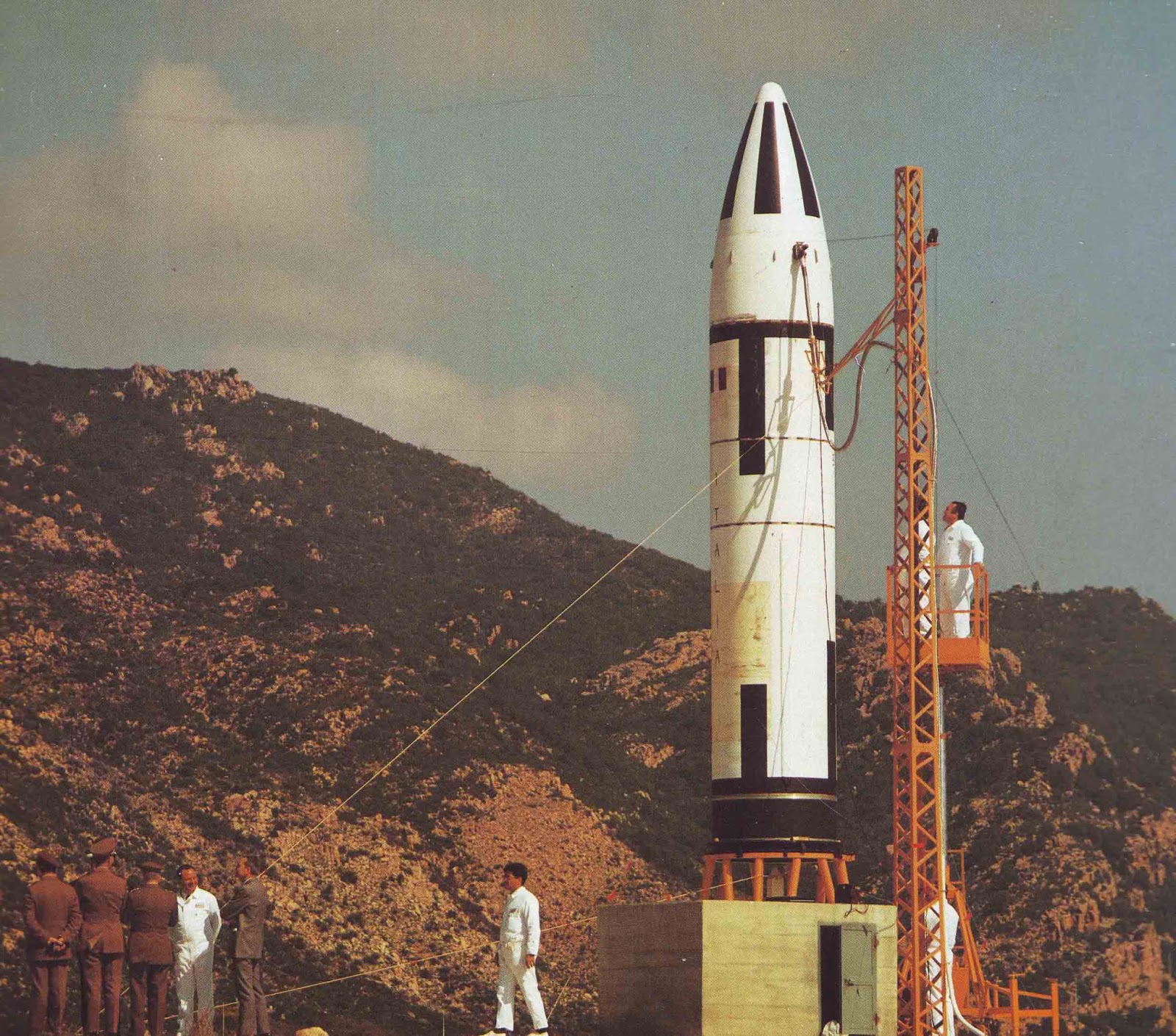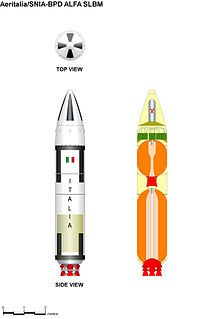Italy
The secret forgotten history of the Italian nuclear ballistic missile

Italy has been, since the end of World War II, a peaceful, indeed almost gullible, country with limited military spending.
Yet, in the 1960s and 1970s, in the heart of the Cold War and with a booming industry, this country, like France and the United Kingdom, also thought of equipping itself with nuclear weapons, especially to deal with a possible threat from dictator Tito’s Yugoslavia, which, at the time, had nuclear weapons programs.
The Alfa program launched in the 1970s by Italy focused on a Medium-Range Ballistic Missile (IRBM) produced by Aeritalia and similar to the Polaris A-3. With a range of more than 1,600 km, it could potentially strike all Eastern Bloc countries with a single nuclear warhead weighing 1 ton.
On November 28, 1957, the French, Italian, and German governments signed a secret agreement to equip themselves with a common nuclear deterrent. President Charles de Gaulle rejected the agreement after his election, as he decided to provide France with its own independent nuclear arsenal. In the early 1960s, Italy found itself surrounded by nations that were pursuing the construction of nuclear weapons. Yugoslavia and Romania had begun independently developing their own atomic weapons and were collaborating in the design and development of the new Soko-IAR J-22 Orao fighter-bomber intended for their use. The government of neutral Switzerland had also decided on December 23, 1958, to equip its armed forces with nuclear weapons.

In 1957, the Navy began work on transforming the light cruiser Giuseppe Garibaldi into a missile launcher ship. During the transformation work carried out at the La Spezia Arsenal, it was decided to install, in a special aft deckhouse, four launch wells for Polaris A-3 ballistic missiles equipped with nuclear warheads. Such installation of nuclear weapons on surface ships was part of a newly conceived NATO operational concept. The missile-launching cruiser Garibaldi rejoined the squadron during 1961, beginning test firings of the wells which were followed by test launches of inert simulacra and self-propelled simulacra, both with the ship stationary and underway. The first launch of a ballistic missile simulacrum was performed on August 31, 1963, in the Gulf of La Spezia. Although the tests performed were all successful, the missiles were never supplied by the U.S. government, as political reasons prevented their planned release.
On January 5, 1963, the U.S. government, based on the post-Cuba crisis agreements reached with the Soviet Union, decided to withdraw the PGM-19 Jupiter medium-range ballistic missiles from Italian and Turkish territory. This decision was later approved by the Italian government, and the 36th Strategic Interdiction Aerobrigade was deactivated on April 1, 1963, to be officially disbanded on June 21 of that year. As an alternative to the PGM-19 Jupiter, the Italian government decided to develop its own nuclear program.
In December 1964, General Paolo Moci requested authorization from the then Chief of Defense Staff, General Aldo Rossi, to initiate the development of a national nuclear deterrent. General Rossi gave his authorization in principle, recommending that the strictest secrecy be maintained over such an initiative. General Moci had numerous talks with Italy’s top missile expert at the time, Professor Luigi Broglio, who had launched numerous satellites from the equatorial base in Mombasa. From these talks came, considering the nation’s economic possibilities, the idea of building a missile with a range of 3,000 km, thus having the possibility of striking all of Europe and North Africa, armed with a 2.5 kg plutonium nuclear warhead. The planned production of 100 missiles would have cost as much as bringing the new Lockheed F-104G Starfighter fighter-bombers on line.

Major Italian aerospace companies contributed to the Alfa program, led by Aeritalia (structures and heat shield), while SNIA-BPD Spazio supplied the rocket engine, Sistel the on-board electronics, and Selenia the ground control and guidance system. Other smaller firms included in the program were SNIA-Viscose Laben-Montedel (firing station), Mupes (launch pad), and Motofides/Whitehead.
Several tests on scale models of the thruster were carried out between December 1971 and July 1973 at the BPD Spazio plant in Colleferro, Italy. The first-stage engine was tested eleven times in static tests between December 1973 and January 1975, taken at the Navy’s “Cottrau” balipede, located in La Spezia. The first experimental launch of the missile, equipped with the inert second stage, took place from the Salto di Quirra firing range (Sardinia) at 5 p.m. on Sept. 8, 1975. The missile reached an altitude of 25 km in one minute, reaching 110 km before falling back some sixty kilometers from the test area. Two more experimental missiles were launched from Salto di Quirra, the second on Oct. 23, 1975, while the third and final one occurred on April 6, 1976. All three launches were successful. Italy has its missile, and it worked quite well.
At the time, the U.S. government was placing a high priority on nuclear nonproliferation and was pushing to get an international treaty signed. The Soviet Union made the elimination of the NATO Nuclear Multilateral Force one of the preconditions for its accession to the Nuclear Nonproliferation Treaty, which was signed on July 1, 1968, by the U.S., U.K. and Soviet Union. Neither Switzerland, the Balkan countries nor Italy immediately ratified it. The Swiss government joined the treaty in 1969, while the Yugoslav and Romanian governments ratified it by March 1970. Western intelligence services indicated that, even after the treaty was signed, Yugoslavia was still developing nuclear weapons at the Vinca Institute, located near Belgrade.
This stopped the first nuclear ballistic missile program, but the story was not completely over…






